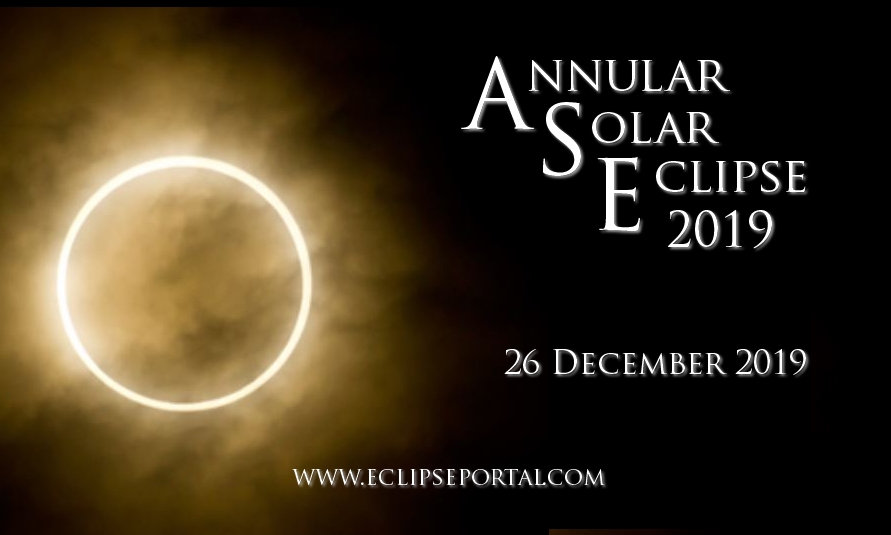On 26 December, 2019 an annular solar eclipse occurs through a narrow corridor sweeping from the Arabian peninsula all the way to the Pacific Ocean via southern India, the bay of Bengal, Singapore and Indonesia . This path is known as the path of annularity.
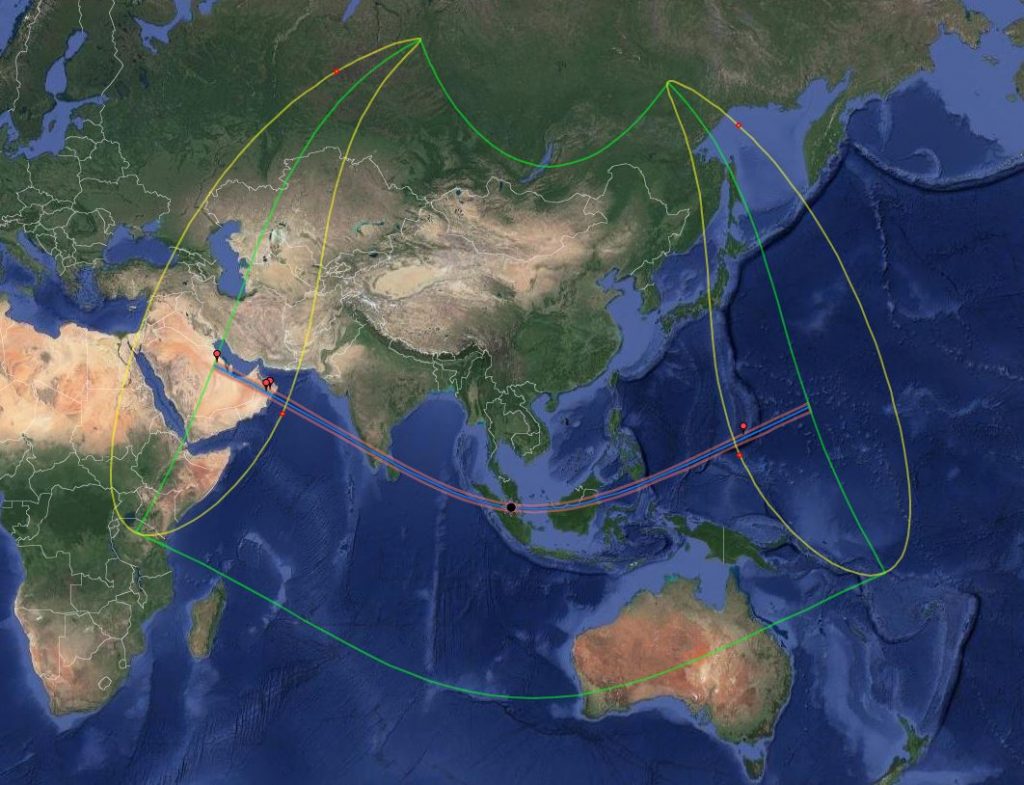
During an annular solar eclipse, the Moon crosses the Sun completely centrally however the Moon’s orbit is in a position whereby our natural satellite is furthest away from Earth. This means that the Moon’s apparent size in the sky is not large enough to completely cover the Sun as witnessed during total solar eclipses. Instead, this creates a “ring of fire” effect as shown below…
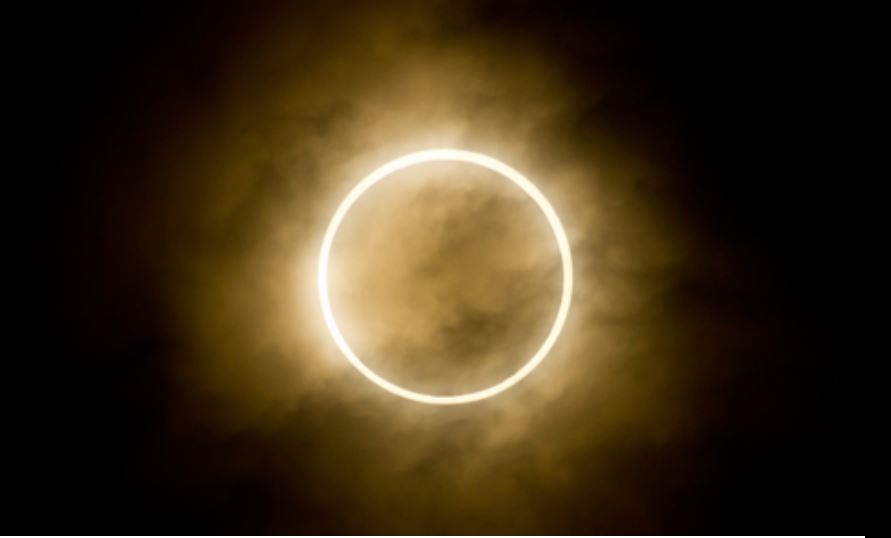
A partial solar eclipse will also be witnessed from a much larger area of the globe including the Middle East, the Indian Ocean, southern and eastern Asia and north western Australia.
Saudi Arabia
The Annular phase of the eclipse begins approximately 180 kilometers West of Dammam in the desert of eastern Saudi Arabia. The first significant urban area on the centre line is Al Hofuf with a population of 150,000. At this point, observers will enjoy 2 minutes and 59 seconds of annularity however, the Sun will only be just over 1 degree in altitude at Sunrise on the eastern horizon.
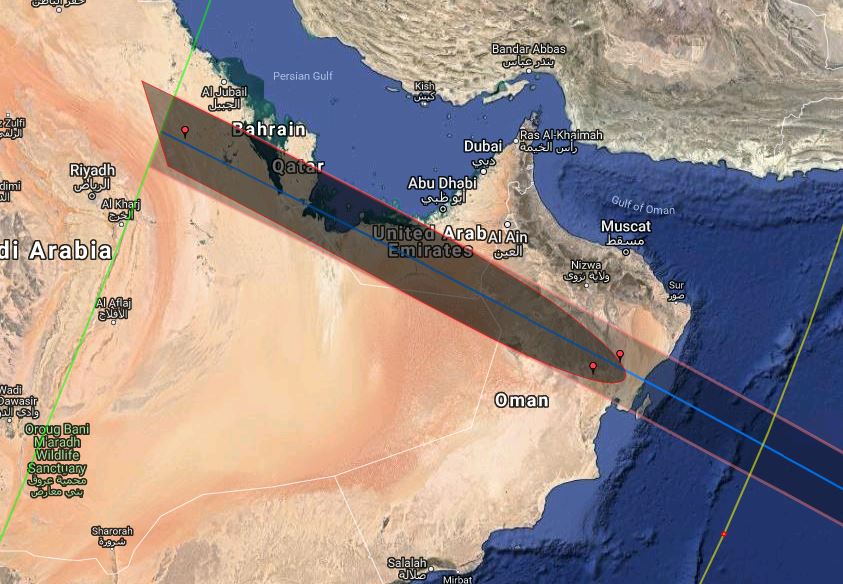
The annular eclipse will then progress in to the Arabian sea after crossing Masirah Island.
Southern India and Sri Lanka
The annular phase will not hit landfall until reaching the west coast of southern India. Here the annualar path will cross this region in a south-easterly direction with the central line passing just 20 kilometers north of Coimbatore. Coimbatore will be the first major city to see the annular eclipse (with a population of 1.6 million).
The path of annularity then progresses over the Palk Straight and across the northern tip of Sri Lanka where Jaffna, the capital of the Northern Province, will enjoy an annual solar eclipse lasting 2 minutes and 59 seconds.
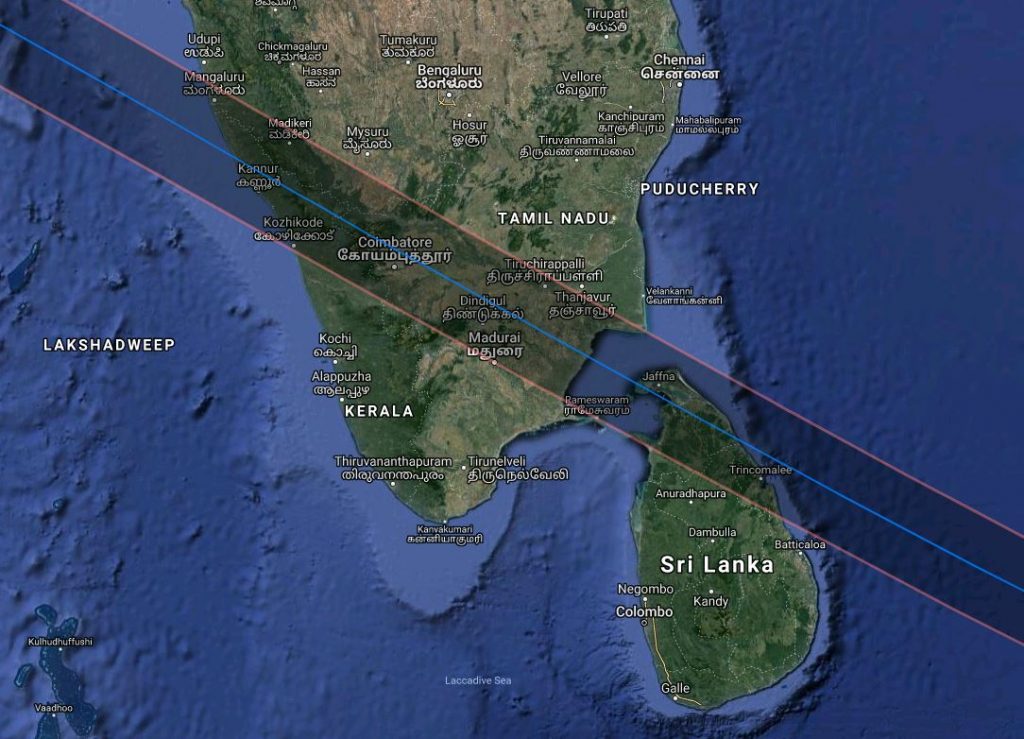
Singapore and Indonesia
The eclipse then progresses eastward in to the Bay of Bengal for around 1700 kilometers until reaching landfall on the island of Sumatra, Indonesia. Here is where maximum annular eclipse occurs lasting 3 minutes and 40 seconds 100 kilometers north east of Pekanbaru.
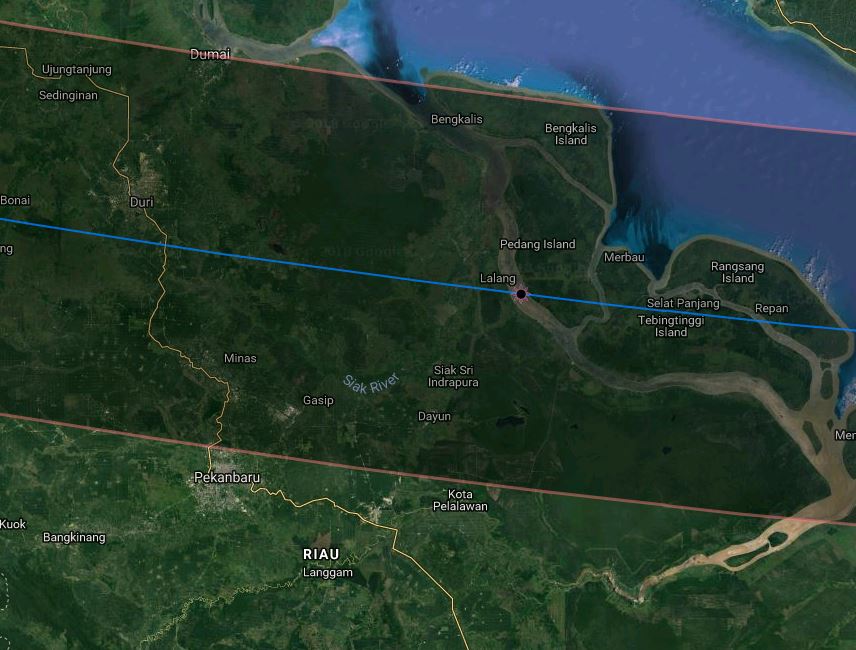
Just 175 kilometers further eastward, the northern tip of the path of annularity crosses the city state of Singapore. With a population of 5.6 million people, this is the most heavily populated region along the annular eclipse path. Central Singapore will enjoy an annular eclipse lasting 1 minute and 10 seconds. Just a few miles north and the eclipse will not reach annular phase (such as neighbouring Johor). Meanwhile, the central line is some 50 kilmoters to the south of Singapore along the Riau islands. All of the Southern Islands along the Singapore Straight will witness an annular solar eclipse as will the majority of the Riau Islands as shown in the map below…
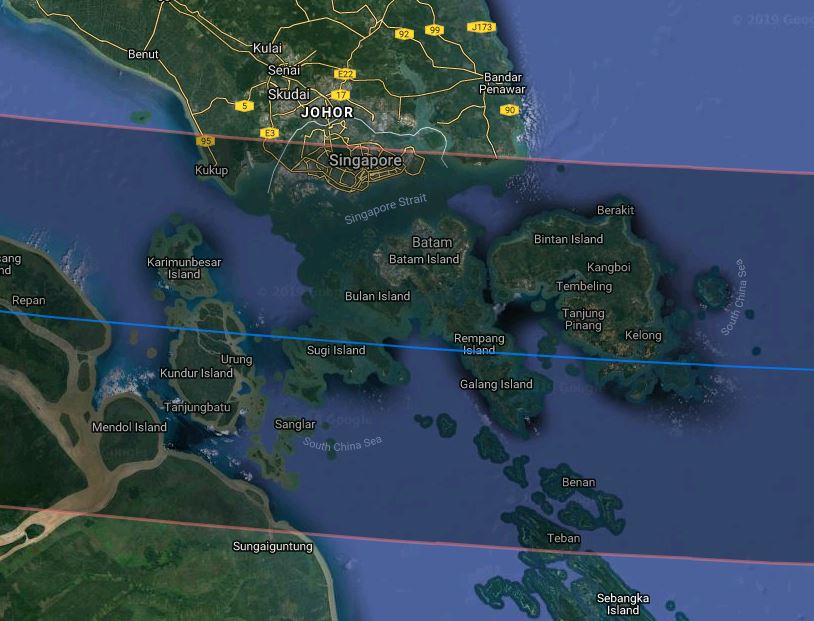
The annual eclipse path then continues on in to the South China Sea conveniently passing right through the group of islands in the Tambelan archipelago. The next island to witness annularity is Borneo (the third-largest island in the world). The path then progresses onward across the Celebes Sea.
The path then clips the very southern tip of the island of Mindanao in the Philippines. The Sarangani Straight and islands will also be in the path of annularity.
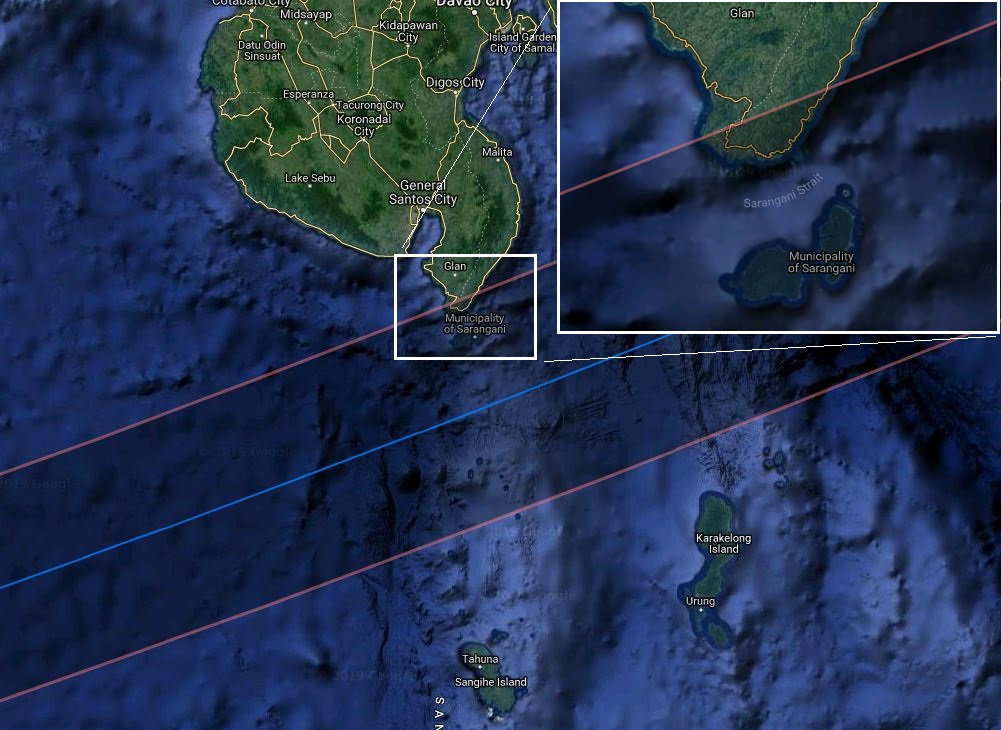
The Mariana Island of Guam (U.S. territory) as well as the smaller island of Rota (known as the “Friendly Island”) are both in the path. Guam being very close to the central line witnesses an annular eclipse lasting 3 minutes and Rota getting 2 minutes 23 seconds…
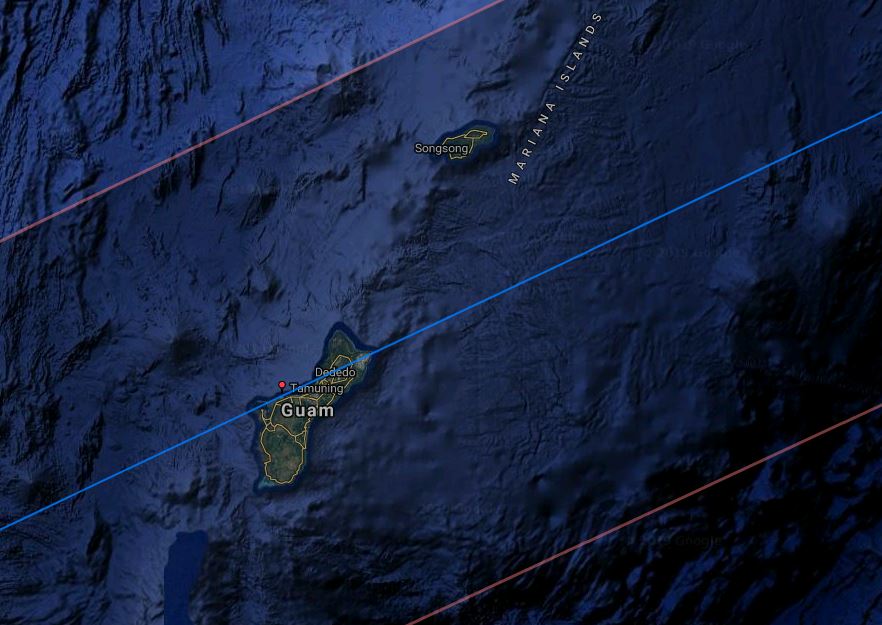
To find out the timings of this eclipse from your country / location, visit our eclipse timings page

